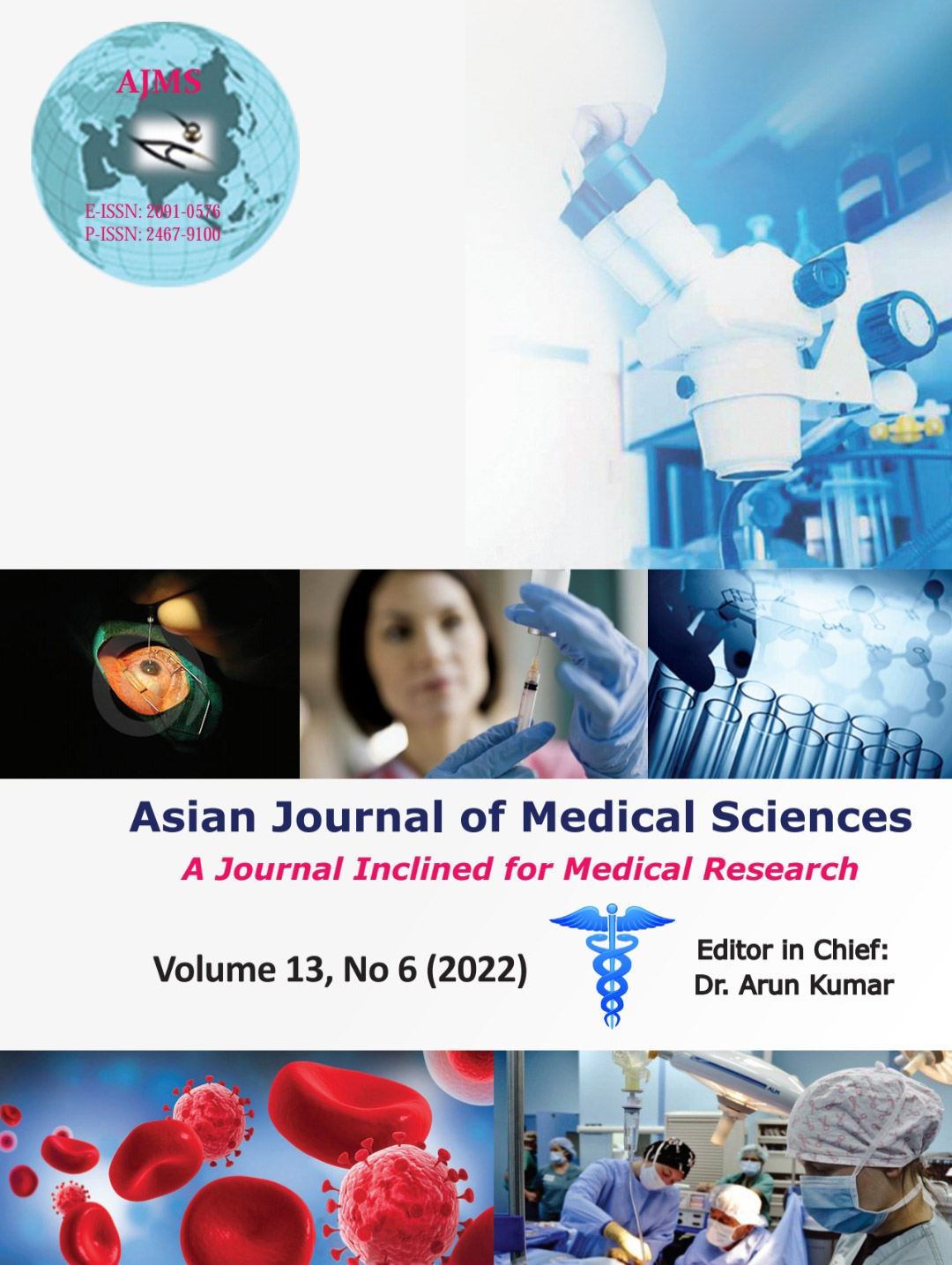Study on clinical profile and antibiotic sensitivity pattern of enteric fever patients in a tertiary care hospital of East India
Keywords:
Antibiotic sensitivity, Clinical profile, Enteric feverAbstract
Background: Enteric fever is a global health problem which is endemic in the Indian subcontinent. With the changing pattern of clinical presentation and antibiotic sensitivity, physicians are facing a challenge to treat the disease in day-to-day practice.
Aims and Objectives: The purpose of this study is to know the clinical profile of enteric fever and to study the pattern of antimicrobial susceptibility among Salmonella species.
Material and Methods: This is an observational cross-sectional study including 50 cases of enteric fever admitted under General Medicine Department of a tertiary medical institute of Kolkata from January 2019 to December 2019, diagnosed on the basis of positive results found on blood culture, Widal test, and Typhi dot immunoglobulin M. Proper history taking, detailed clinical examinations, and relevant blood investigations were done.
Results: The mean age of patients was 21.16±5.72 years with 32 males and 18 females. Fever was the most common symptom, followed by anorexia, abdominal pain, and headache. The predominant sign was coated tongue seen in 20 (40%) patients with hepatomegaly in 4 (8%) and splenomegaly in 9 (18%) patients. Salmonella Typhi and Salmonella Paratyphi A were isolated in 32 (64%) cases and 5 (10%) cases, respectively, with 100% sensitivity to 3rd generation cephalosporins, azithromycin, and meropenem. Fluoroquinolone resistance was approximately 90%.
Conclusion: Widely varying clinical presentation makes early diagnosis and proper selection of antibiotics essential for the treatment and prevention of complications of enteric fever. Quinolone resistance still remains an area of concern.
Downloads
Downloads
Published
How to Cite
Issue
Section
License
Copyright (c) 2022 Asian Journal of Medical Sciences

This work is licensed under a Creative Commons Attribution-NonCommercial 4.0 International License.
Authors who publish with this journal agree to the following terms:
- The journal holds copyright and publishes the work under a Creative Commons CC-BY-NC license that permits use, distribution and reprduction in any medium, provided the original work is properly cited and is not used for commercial purposes. The journal should be recognised as the original publisher of this work.
- Authors are able to enter into separate, additional contractual arrangements for the non-exclusive distribution of the journal's published version of the work (e.g., post it to an institutional repository or publish it in a book), with an acknowledgement of its initial publication in this journal.
- Authors are permitted and encouraged to post their work online (e.g., in institutional repositories or on their website) prior to and during the submission process, as it can lead to productive exchanges, as well as earlier and greater citation of published work (See The Effect of Open Access).




